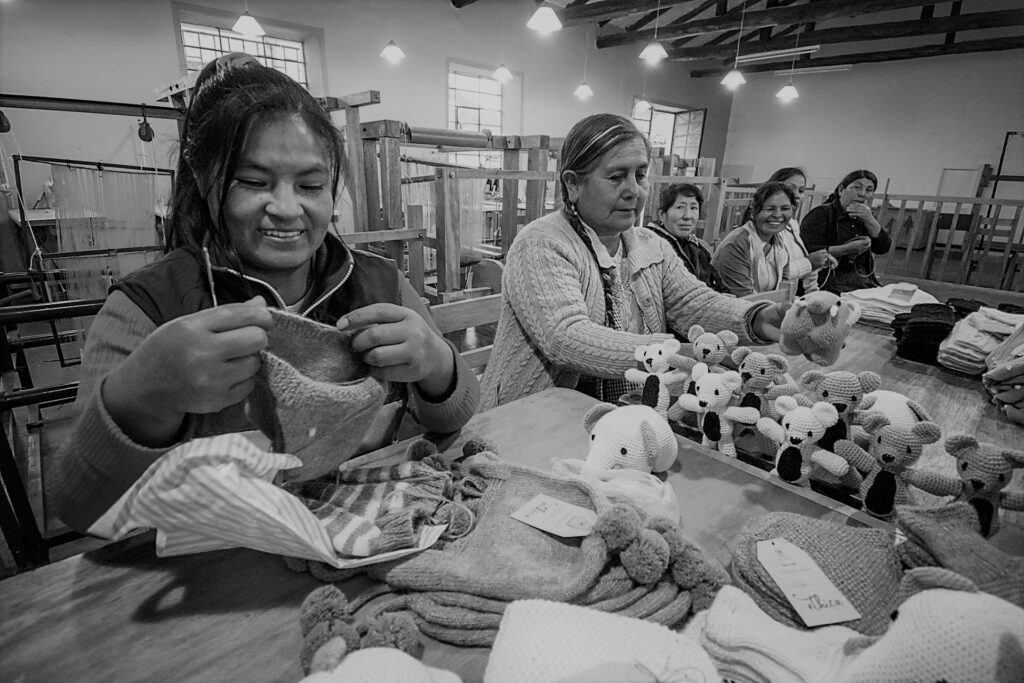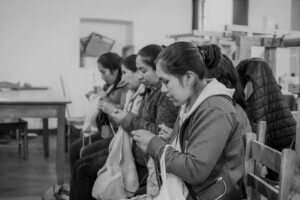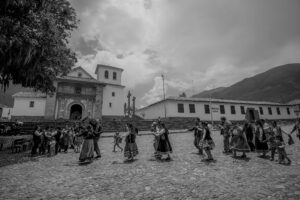Network Stories: Carlos Miguel Silva Canessa
Describe your organization and the unique work that it is doing. Who and what are affected by the work? How does/will the work impact people’s lives?
The Andean Baroque Route, promoted by the Society of Jesus, includes the churches of the Compañia de Jesus of Cusco, San Pedro Apostol of Andahuaylillas, San Juan Bautista of Huaro and the Chapel of the Virgen Purificada Chapel of Canincunca.
These churches were built in the sixteenth century; they own an extraordinary pictorial richness (murals and canvases); sculptures, with beautifully carved cedar altars covered in pan de oro gilding; and their architecture are important adobe structures. The route begins in the heart of Cusco and runs south of the valley. During Incan and colonial times an important trade route flourished, silver was transported from Potosi and coca leaves from the rainforest. The trade route is presently a tourist circuit. The churches were enriched with a range of decorations from the sixteenth through the nineteenth centuries. We find depictions of local flora and fauna, as well as vernacular traditions featuring the worship of the sun and the moon. The churches are canvases depicting different styles, however, the Andean Baroque predominates.
The Andean Baroque Route has four objectives. First, to promote the recovery, conservation, and dissemination of the route. Second, promote local culture. Many artistic projects are held here, most notably the Symphony for Peru, a project spearheaded by the great tenor Juan Diego Flores that includes a “lutherie” workshop (for making instruments), as well as a chorus and orchestra featuring local children and teenagers. Third, to contribute to the touristic development of the area to generate job opportunities to their citizens through restaurants, hostels, handicraft market, etc. Finally, develop a variety of social works: including, artisan training projects, a program to fight human trafficking, educational activities for children and teenagers through the educational play center programs, computer classes, reading nooks, and social assistance in the form of soup kitchens.
Tell us about a project that has benefited from the training you received from us? Why was the project important? Was there anything unusual or surprising about the execution of this project?
As president of the Andean Baroque Route I had the great opportunity to participate in the field school, Engaging Local Communities in Heritage Management through Archaeological Ethnography, organized by Heritage Management Organization in July of 2018. This program was focused on acquiring training in the fields of archaeological ethnography, community archaeology and heritage management, while delving into the daily life of the rural community of Gonies, in central Crete. Investigating the local community involvement with their material and intangible heritage was a central component of the program.
The international participants paired with the field school professors provided an enriching experience. The guidance of Dr. Aris Anagnostopoulos, professor of Archeological Ethnography and community engagement and Dr. Eleni Stenafou, professor of Oral History and Concepts of Heritage, was invigorating. I cannot forget the people of Gonies who enriched us with their stories made possible by the interviews that we had with them. My peers with their variety of experiences and formation also enriched the experience, hearing the different local realities across Colombia, Moldova, Spain, Peru and the United States provided a deeper richness to the field school. We learned from the professors, the local people and from each other.
The HMO field school allowed me to gain greater knowledge, develop abilities and open new perspectives to improve our services in the Route in the articulation with the communities in our patrimony. I obtained tools to dialogue with the local people in order to understand what they are looking for; how they imagine their future and how they consider that the Andean Baroque Route can enrich their lives. We are working towards a collective process, together building a dream where local people and the project Andean Baroque Route share a sustainable and common future. A project that leads people to value their heritage, to be more participative in the development of the area and to give an original experience where the local and the visitors can build an unforgettable experience that enriches both of them.
Has your organization worked on any other projects that are innovative, globally significant and can be replicated in a local market?
The Andean Baroque Route is a unique and globally significant project because of the articulation of four elements. The first element is recovering and preserving the heritage of the churches. Second, the promotion of culture through the preservation of the local tradition and artistic events. The Route, thirdly, contributes to the touristic development of the area, allowing for job opportunities for local citizens (restaurants, hostels, handicraft market, etc.). The Route allows us to develop social work in the area, especially for children and women. Children participate in a daily nutrition program where children receive a nutritious meal every day, as well as help and training in our libraries and computer centers. All in the hands of a team who monitors the wellbeing of the child both within the program and at home, therefore, reducing the violence the child is exposed to. The combination of heritage, patrimony, tourism, and social work makes the Andean Baroque Route one of kind in its impact both for the local community and for all its visitors.
The Andean Baroque Route promotes fair trade through its two gift shops which offer visitors fair trade items, such as textiles and ceramics, produced by local people. The gift shops are also a place for the commercialization of essential oils obtained from medicinal and aromatics plants that come from local fields. Artisans have become eager entrepreneurs, the economic motors of their homes, especially women.
What are the global issues that your project addresses (e.g., fighting climate change, preserving heritage and culture, promoting local participation)?
– Preserving heritage through restoration, conservation and maintenance: The Andean Baroque Route helped restore these works, such as the World Monuments Fund, French International Cooperation, Repsol, Enel, Backus, and many others who have recognized the importance of our cultural heritage. The Andean Baroque Route helps promote the recovery, conservation, and dissemination of a route that is truly alive! Here, life is celebrated in all of its dimensions. In addition, we have a second phase of restoration including churches of San Juan Bautista of Ccatcca, San Pablo de Ocongate, Chapel of Kuchuwasi (Ocongate), and San Francis of Marcapata. The churches of Ccatcca and of Ocongate have been already restored. We are looking for a restoration of Kuchuwasi chapel and we are working with Peru’s Ministry of Culture of Peru the restoration of church in Marcapata.
– Promoting local participation and preserving culture: Give an experience that articulates tourism and local traditions from a sustainable tourism perspective. The duality of this challenge includes offering tourists the possibility to know the past through heritage of the churches and an opportunity to interact with the local people who maintain Incan traditions. The second component of this challenge is working with the population to offer them the tools to build conditions for sustainable tourism while interacting with tourists in a way that maintains their traditions.
– Ecological aspect: The Andean Baroque Route is located in the Peruvian Andes, which are extremely vulnerable in face of climate change. The increase in temperature produces intense rains that could affect the churches, but especially the lives of the population because agricultural production is the main way of life. The snowy mountain Ausangate (6,384 meters) is also located in the region; the increase of temperature would melt the snow and dramatically change the landscape.



